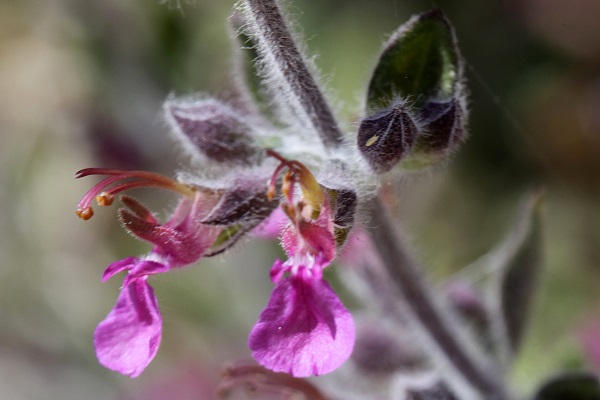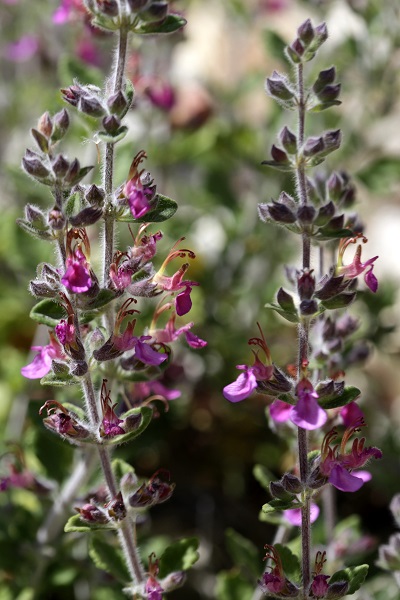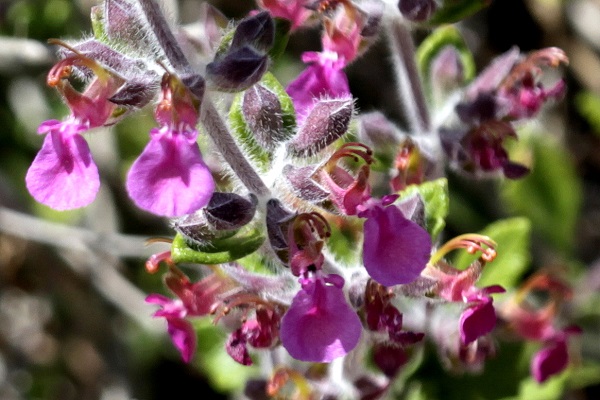Hebrew: געדה מפושקת, Arabic: الجعدة المتباينة
| Scientific name: | Teucrium divaricatum Sieber ex Heldr. | |
| Common name: | Hedge Germander or Aegean Sage Germander | |
| Hebrew name: | געדה מפושקת | |
| Arabic name: | الجعدة المتباينة | |
| Family: | Labiatae (Lamiaceae), Mint Family, משפחה שפתניים |

|
| Life form: | Small stout shrub 10-30 (-50)cm | |
| Spinescence: | no | |
| Succulence: | no | |
| Stems: | Brown to dak red, very branched, with small grey white hairs | |
| Leaves: | Coriaceous (resembling leather), ovate, rather shallowly crenate; petiole shorter than the width of the lamina | |
| Inflorescence: | Usually lax. | |
| Flowers: | Calyx c. 8mm, ciliolate; corolla pink or purple, upper lip of corolla absent, corolla-tube glabrous inside; petiole shorter than the width of the lamina | |
| Fruits / pods: | Nutlets | |
| Flowering Period: | April, May, June, July | |
| Habitat: | Batha, Phrygana | |
| Distribution: | Mediterranean Woodlands and Shrublands, Semi-steppe shrublands | |
| Chorotype: | Mediterranean | |
| Summer shedding: | Perennating |

Derivation of the botanical name: Teucrium, Greek teukrion, probably named for Teucer (Τεῦκρος, Teukros), the son of King Telamon of Salamis and his second wife Hesione, daughter of King Laomedon of Troy. He fought alongside his half-brother, Ajax, in the Trojan War and is the legendary founder of the city Salamis on Cyprus. divaricatum, divaricate, spreading asunder at a wide angle. The Hebrew name: געדה, ga'ada, New Hebrew; from Arabic: ja'ada.

|